Artist Interviews 2021
Alexandra Nechita 
By Laura Siebold
Alexandra Nechita is a Romanian artist who immigrated to the U.S. as a toddler. Her passion for art became visible at an early age when Alexandra used different media of art to address existential issues In her interview, the artist tells us about the importance of personal world views in the observation of art. Alexandra sources from her own power and experiences as a woman for inspiration. Her artistic work is a reflection of both internal and exterior everyday stimuli, inspired by her cultural heritage and her voice as a storyteller. Alexandra shares the process of choosing the right medium for her projects, her experiences of the relation between art and personal growth, and the ability for art to address larger social and global issues, reaching and igniting conversations between people.
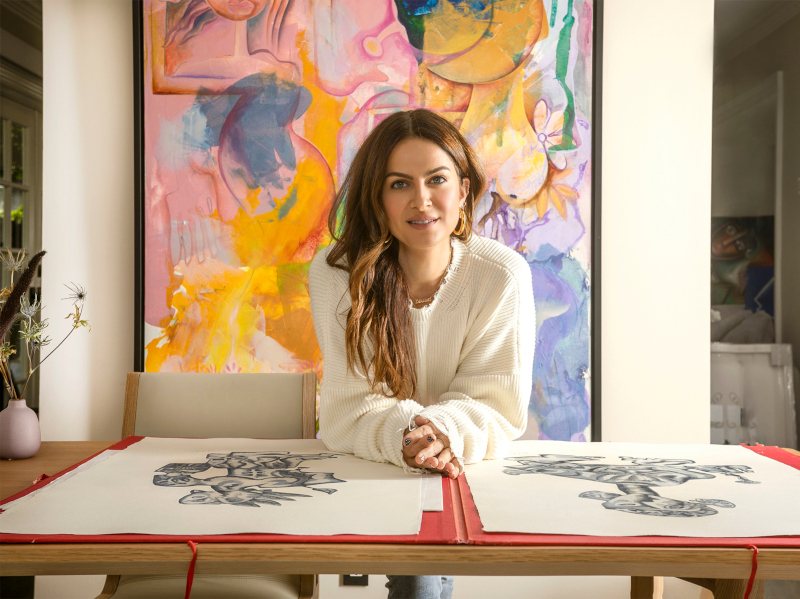
You have been known as a child prodigy and titled as a “Petit Picasso”. When did you first consciously engage with art? Have you always wanted to be an artist? Please tell us a little about your background.
I was born in Romania and immigrated to the United States at one and a half years old. I always felt I was a little different from other children but often thought it was simply cultural. My first memory with art goes as far back as 5 years old. I was interested in the act of mark making, and suppose it came from my exposure to coloring books. I especially loved colors and how [they] served as a language on its own. Truthfully, every child loves coloring and making drawings, so that wasn’t necessarily what set me apart from a young age. Instead, it was my unusual passion, almost obsession.
The process of art making was a really natural kind of way of expressing myself. I often felt loaded with big feelings that I couldn’t necessarily place in my own body and in my own head, and the best way for me to survive that was by moving them onto a piece of paper, a canvas, or another medium.
As a child, my work was simple storytelling but underneath it all there was always existential things that I thought about, and bigger things that I was either directly or indirectly affected by like race, inequality, or the fact that I didn't speak English until I was six.
I shined a light on what I thought was important because I felt that I had this ability to communicate things through visual reference that could relate to so many people, regardless of their ethnicity, sex, age, and beyond.
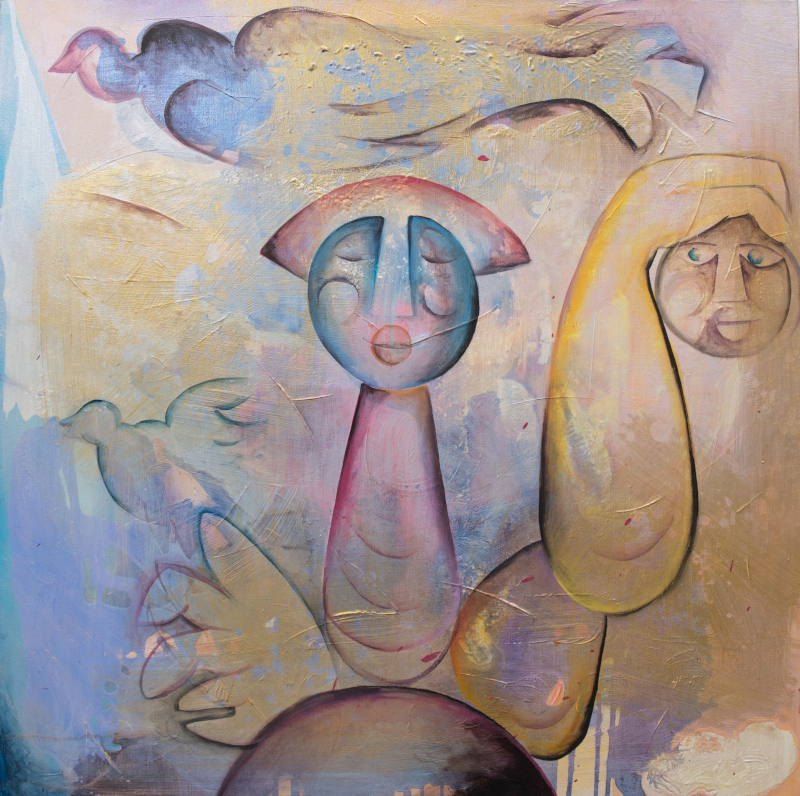
When and how did you discover your unique style as an artist? Do you think that your art speaks to women in the same way it speaks to men and any individuals who are part of the LGBTQ+ group?
Art making was a natural way of communicating what I felt. I was never on this trajectory to discover a style, I just created what I loved, and it has served me well. I think my art speaks differently to all individuals, no matter how you identify. I suppose one's particular world view and personal experiences is how the art experience may differ. As a woman, I am confident in my stance and position both within my work and community. I have found that so long as my pursuit is authentic, I gave the opportunity to resonate with everyone seeking the same kind of transparency. It is my own experiences, and my own failures that are a key source of inspiration for me. As a woman, I'm really interested in this idea of forced femininity that gets put on us. It's something that's been really important in my work.
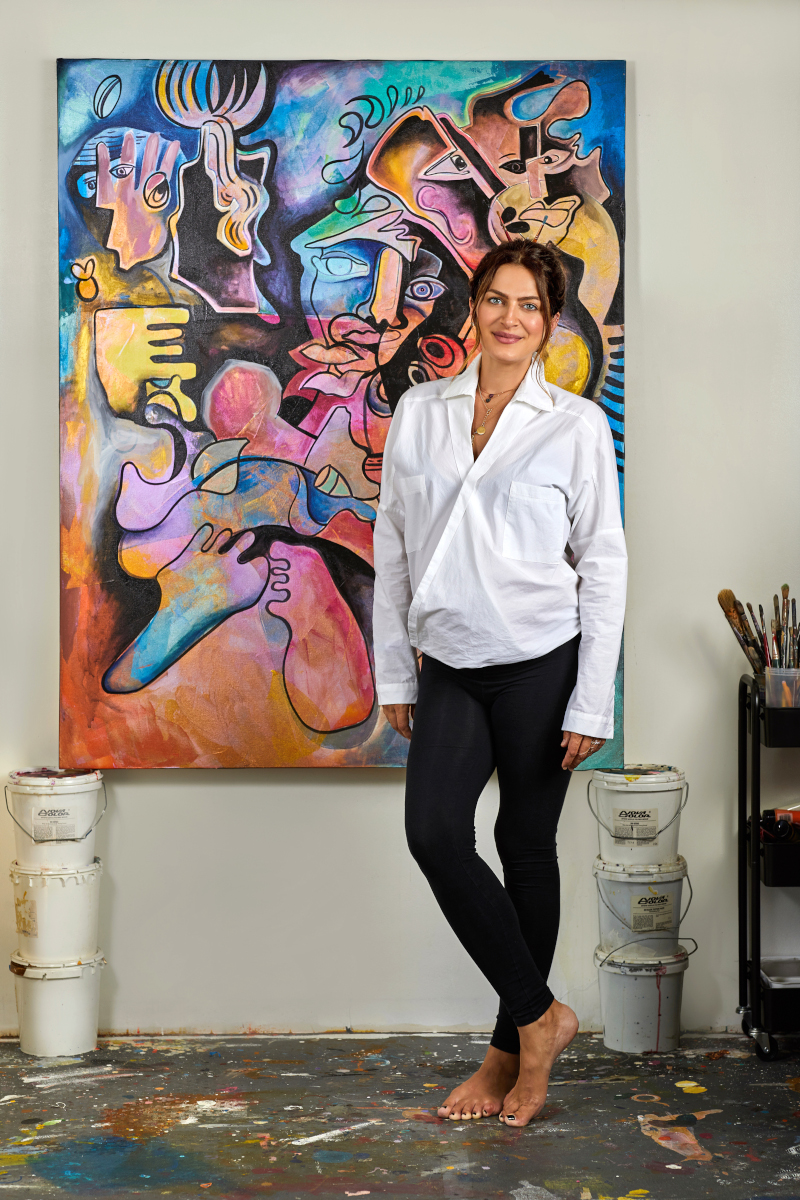

You were born in Romania but immigrated to the U.S. as a toddler. Do you still feel connected to your cultural roots? Do you aim to make the influence of different cultures on your identity to be visible in your art?
Absolutely. I am passionate about my Romanian heritage and very much keep it alive in my daily life. I speak Romanian to my mother and father and have passed along the language to my daughter. I love to cook Romanian cuisine. I am proud to be Romanian and I am blessed to be supported and surrounded by many Romanian powerhouses that inspire me. I think being vocal of my dual nationalities, and my family's complex background via my husband and so on, relates to all cultures. In the end we are all human.
Before the pandemic I spent every summer in Romania. It is around this time every year that I hit a major pause and am in my motherland for work and pleasure. I am due with my second child this fall and with the travel restrictions I am not going this year. I normally take this time to reflect on the last six months and set my goals for the next six.
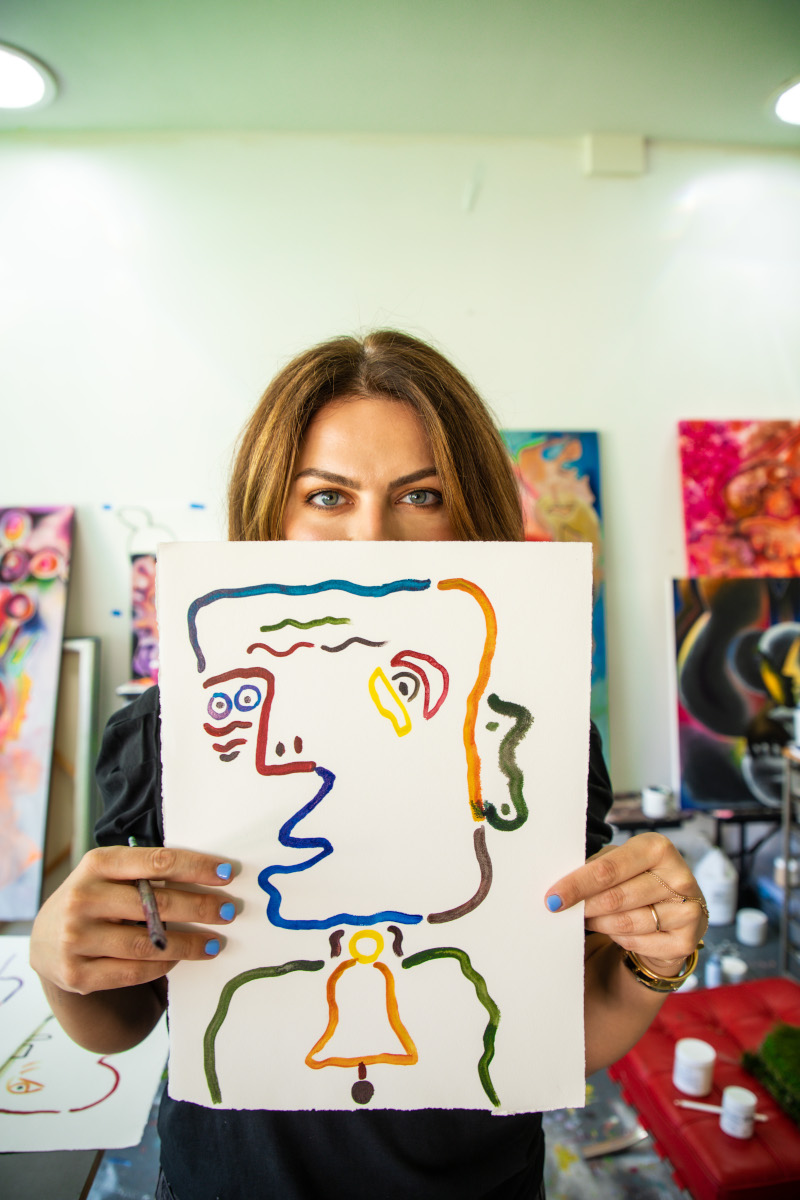
Is there a specific source of creativity you draw from? How much did your degree in Fine Arts influence your artistic style? Please tell us a little about your artistic journey.
I am creatively inspired by daily existence. Everything I make is a direct extension of whatever is happening internally for me... be it self-inflicted chaos or external stimuli. I am a storyteller and my narratives evolve over time. I have always had a distinct “artistic style.” I am not afraid to draw outside the lines and I am constantly exposing myself in the most vulnerable of ways in my work and personal life.
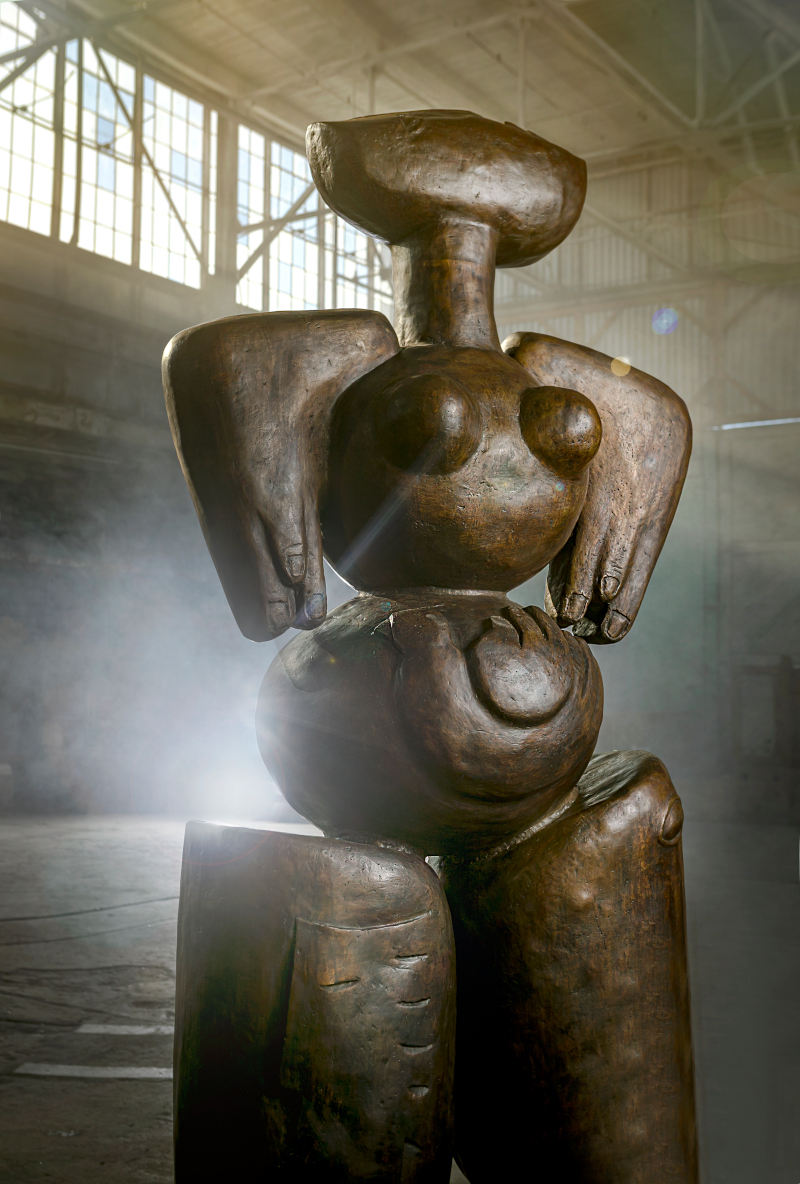
Is there a specific message you want to express with your art? Do you feel that it makes a difference for the message of your art whether it is showcased in public or in private?
I’m driven by the power of messaging through the arts and how profoundly engaging imagery can be and I take my responsibility as an artist seriously and recognize the duty I have in impacting change, at the very least generating conversation. I am also lucky that I do not create art with the intention of being showcased in public. Of course, I love to share my creations with others, but that does not change my intention for a specific message.
However, I am very passionate about public art and having all communities have access to art.
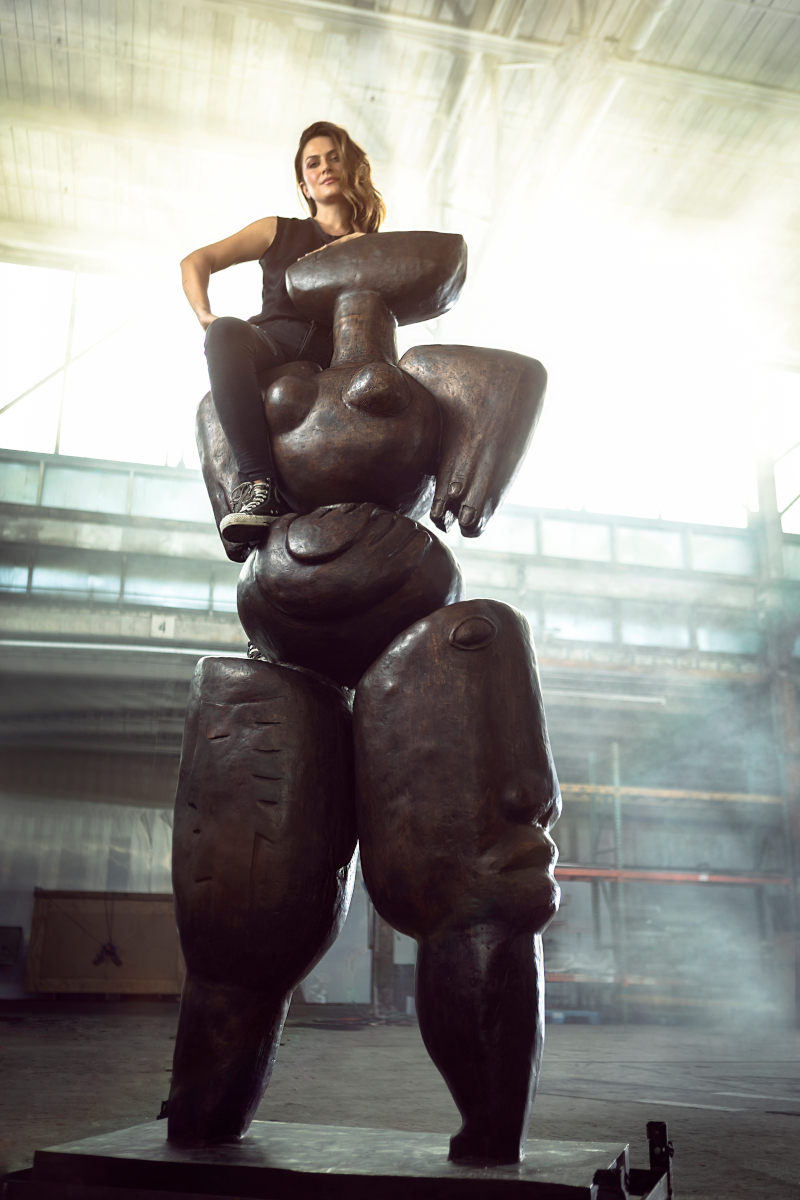
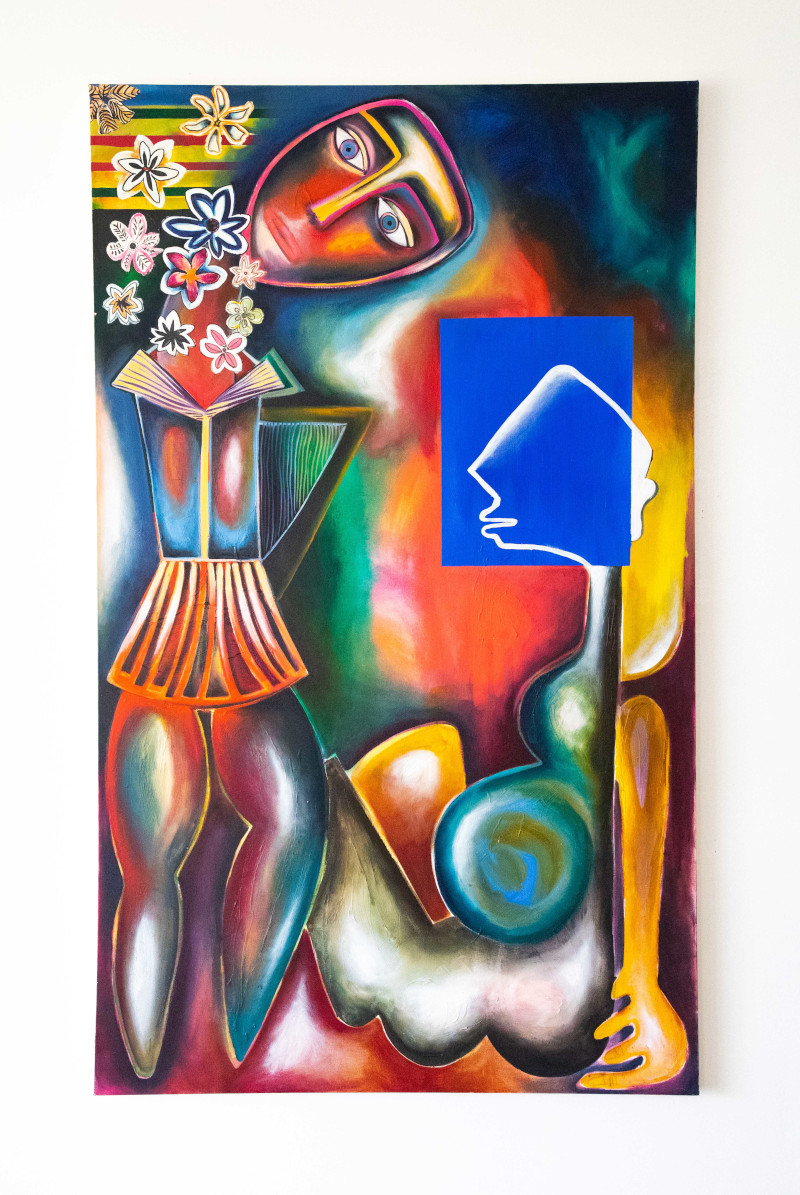
How is working on a painting or drawing different than working on a sculpture? Which role do the right materials play in the process?
When I start to think of a piece I may go through a few different mediums before solidifying the message/ story I am trying to convey through that particular work. Whether it is painting on a canvas, using my hands to sculpt, or re-creating my work in the form of glass blowing or a metal framework. I find each process unique and labor-intensive in its own right. It’s a spontaneous experience that sort of resolves itself by virtue of trial and error.
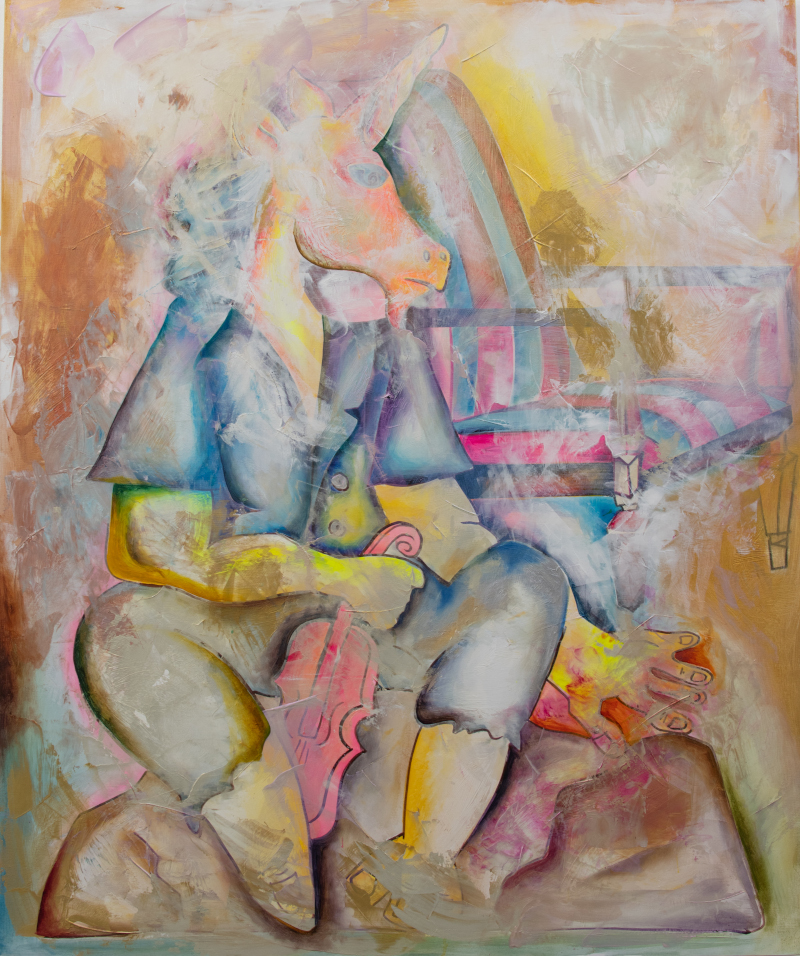
How much does art influence your daily life and vice versa? How much has the pandemic influenced your ability to work and showcase your work as an artist?
Art has been one of the most formative agents in my life. It has carried me through so many phases of my growth and evolution as a person and citizen of the world.
At the beginning of the pandemic, I took a pause like many, trying to understand what was happening to the world as we knew it. I crave outside experiences when it comes to all aspects of my life and recognize how imperative those experiences are to my personal growth and how they shape the lens through which I make my work. Between managing the uncertainty and readjusting daily with my family, I had to work hard to carve out the time and dedicate myself to nurturing my practice even in such uncertain and weird times.
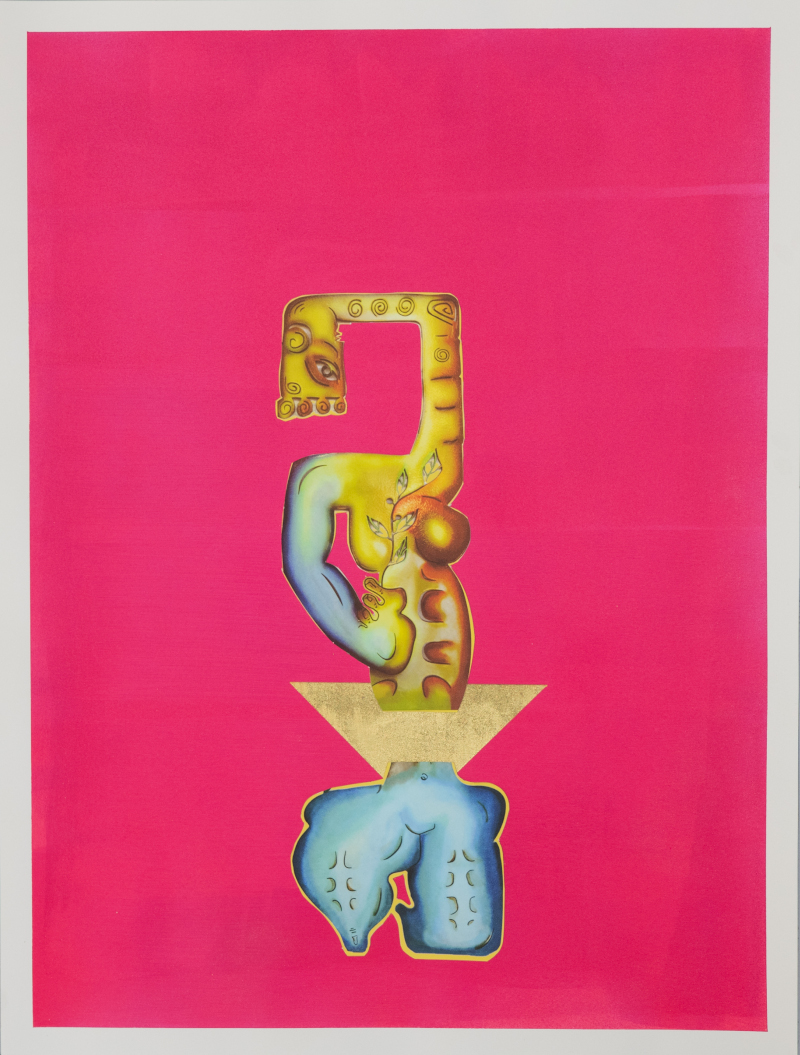
In your opinion – can art help us to understand and master life? Elaborate.
For me personally art and the process of art making offers me ultimate solace. There’s no place or practice that can reconcile all my doubts. Through art we open ourselves up and open up the conversation about feelings and larger social and global issues. By creating art, we reach parts of ourselves that we otherwise couldn’t have, and often we are able to reach others on another level that is outside our typical verbal dialogue and perhaps reach someone that also did not have the words to express themselves.
Additionally, by creating art for public consumption, we provoke conversation, and we allow for groups and communities across so many people to openly discuss how the piece makes them feel or decide what they think the meaning behind the artwork is. Through these open dialogues we allow for individuals to connect and open each other’s eyes up to different ways of interpreting certain ideals or issues. I believe this as a whole brings us closer and broadens our horizons.
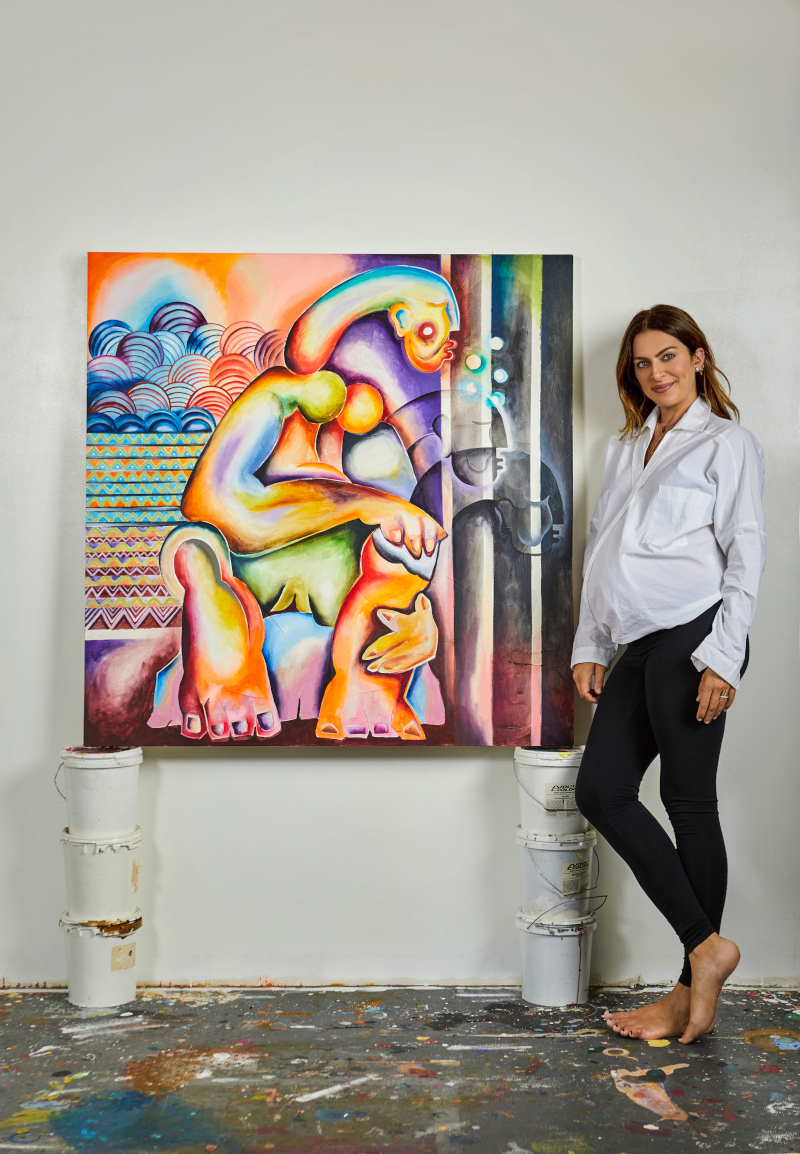
We would love to hear about future projects. Is there anything – a specific style, material, topic – you haven’t tried to work with as an artist yet but which you would like to take on in the future? Are you still planning to install a mural on the corner of Hollywood and Highland, as indicated on your website (https://www.alexandranechita.com/bio/#)?
Yes, I am so excited that in the Fall of 2021 I will be working on a mural at the intersection of Hollywood and Highland with Arts Bridging the Gap, a 501(c)3 Social Justice organization that highlights the voices, experiences, and self-expression of youth from under-resourced communities through immersive arts programs. I am really thrilled about this project, as the organization aims to cultivate the skills, mindsets, and connections that will allow youth to be their best and fullest selves, as individuals and as members of diverse, thriving communities. Serving the public and public art is very important to me.
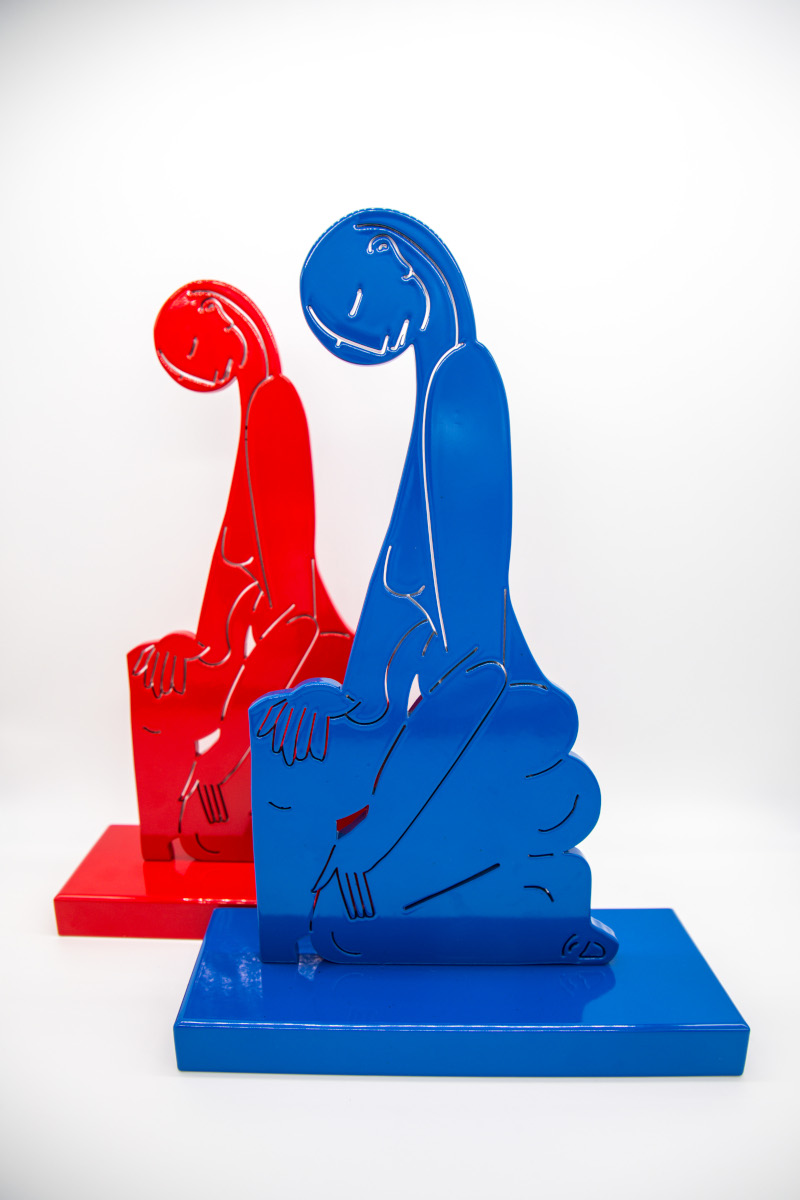
If you could work with anyone in the world, which artist would you like to collaborate with and why?
That is a tough one. Artists that come to mind are Frida Khalo, Alice Neel, Andy Warhol, and Niki de Saint Phalle. All for their wild brains and respective immense talents.
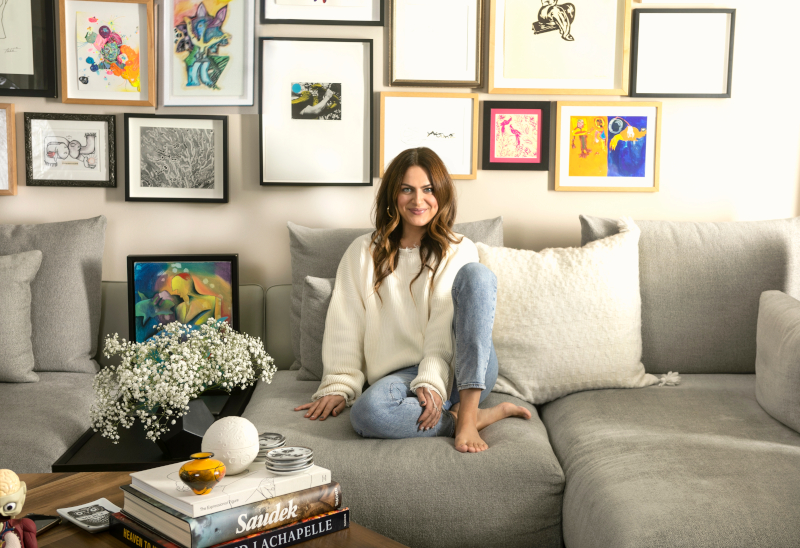
|
|

